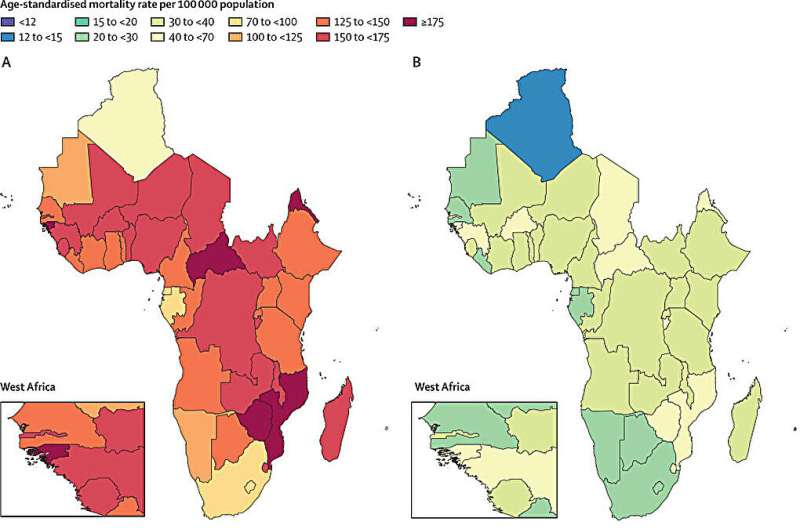Home » Health News »
Antimicrobial resistance leads to more deaths and illnesses in the WHO African region than anywhere else: Study

Over 1.05 million deaths were associated with antimicrobial resistance (AMR) and 250,000 deaths were attributable to AMR in the WHO African region, posing an unprecedented health threat. That’s according to a new study published in The Lancet Global Health.
The number of deaths linked to AMR in the WHO African region is higher than those caused by both HIV/AIDS (639,554) and malaria (594,348), marking a pivotal shift in the health challenges facing the region. Despite the relatively low prevalence of resistance, the WHO African region had the highest burden of AMR mortality, which is partly due to the region’s high burden of infection-related mortality.
This work is the most comprehensive analysis led by researchers at the Institute for Health Metrics and Evaluation (IHME) at the University of Washington’s School of Medicine and the Center for Tropical Medicine and Global Health at the University of Oxford. They examined the regional and country-level estimates of AMR burden, covering 47 countries, 23 bacterial pathogens, and 88 pathogen–drug combinations in Africa in 2019.
The findings reveal a staggering 3.83 million deaths involving infection in the region, with AMR accounting for over 25% of this mortality.
AMR disproportionately impacted health outcomes, with lower respiratory and thorax infections emerging as the primary causes of death, constituting a substantial 48% of all estimated bacterial pathogen AMR fatalities.
Notably, neonates in central and western Africa bore an unequal burden of AMR-related mortality. Four pathogens—Streptococcus pneumoniae, Klebsiella pneumoniae, Escherichia coli, and Staphylococcus aureus—stood out as the primary culprits, each individually responsible for over 100,000 deaths associated with AMR in the WHO African region.
The implications of this study extend beyond immediate health concerns. The results emphasize the need for renewed investments in vaccine development and distribution to prevent infections, particularly against the four primary pathogens. Ultimately, the study highlights the importance of improving access to primary health care and effective antibiotics, particularly in vulnerable populations.
Furthermore, the study sheds light on surveillance challenges, particularly in low-resource settings where limited laboratory infrastructure poses obstacles to accurate estimates. Recognizing data gaps, the report advocates for strengthened laboratory capacity and improved data collection efforts to refine future assessments of AMR.
Despite the challenges posed by insufficient laboratory infrastructure and capacity, the study’s findings provide a critical foundation for shaping health care policies in the WHO African region. The results aim to assist local governments in developing tailored stewardship and infection prevention and control policies to effectively mitigate the impact of prevalent pathogen–drug combinations, using available resources efficiently.
Researchers stress the urgency of implementing comprehensive policies that address the intricate drivers contributing to the region’s disproportionate AMR burden.
As the world confronts the escalating threat of antimicrobial resistance, the report highlights the need for global collaboration, targeted interventions, and sustained investments to address the complex challenges posed by AMR in the WHO African region.
Source: Read Full Article


